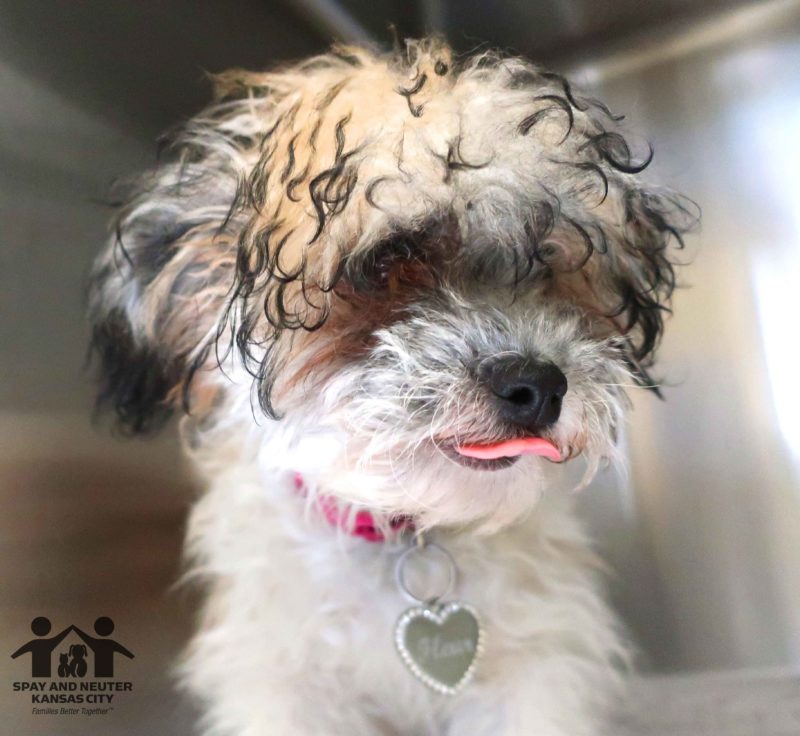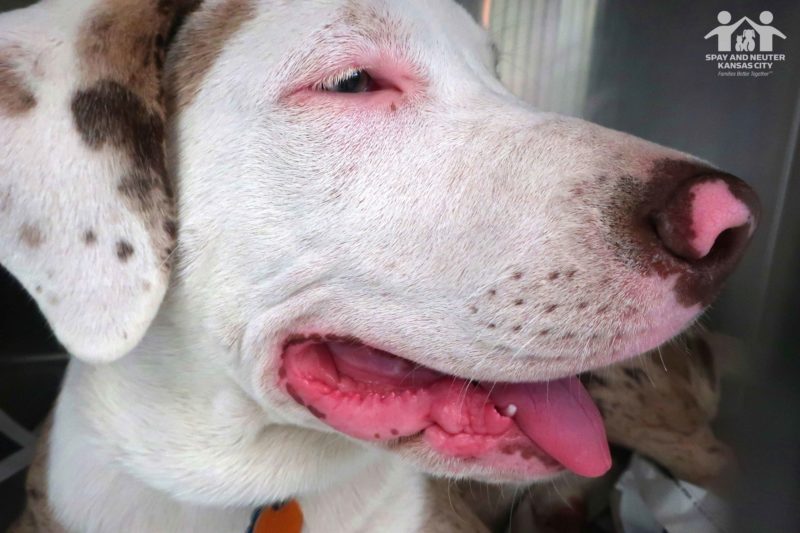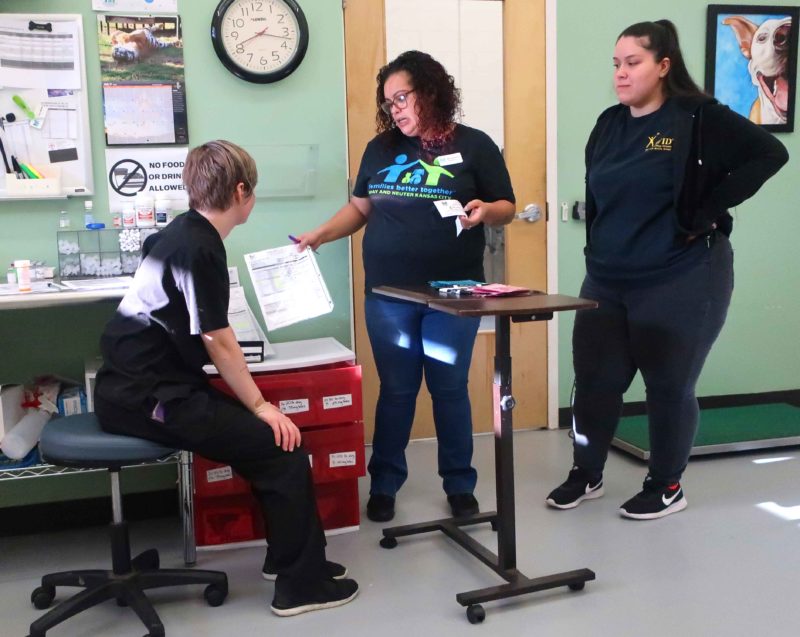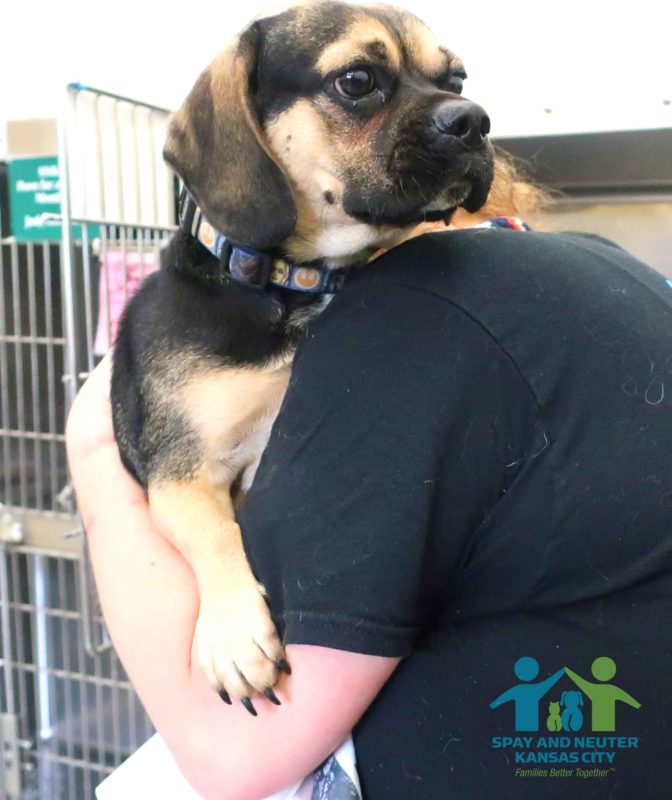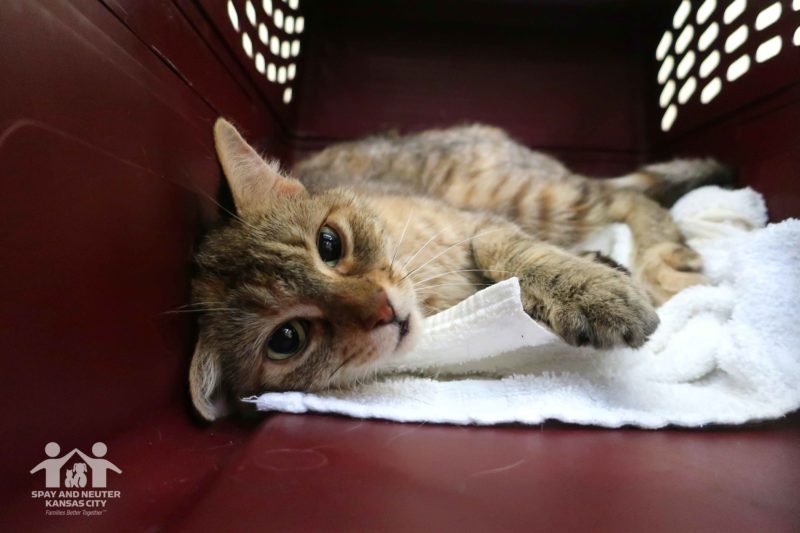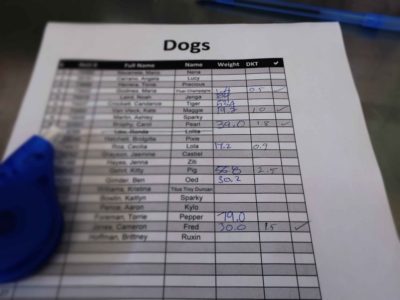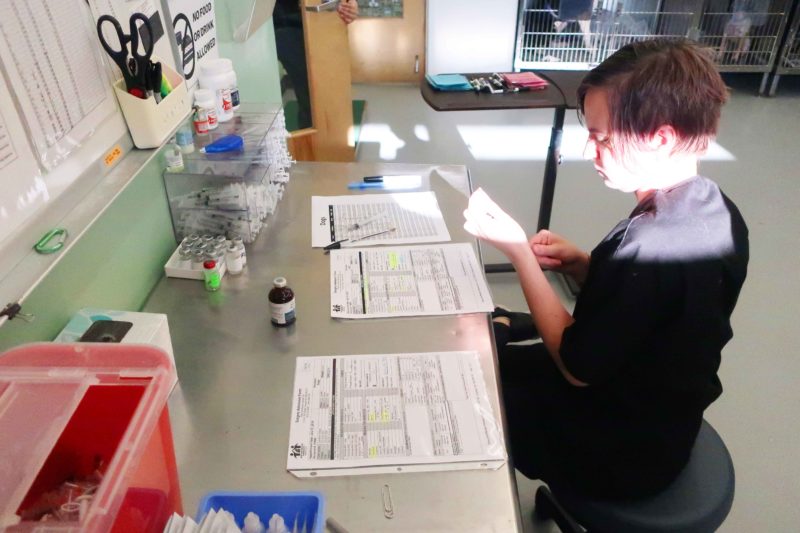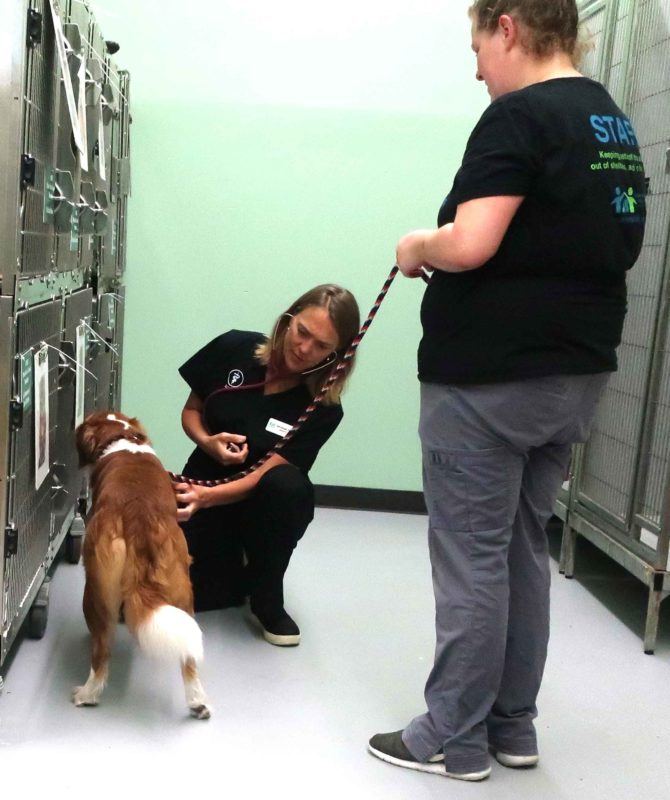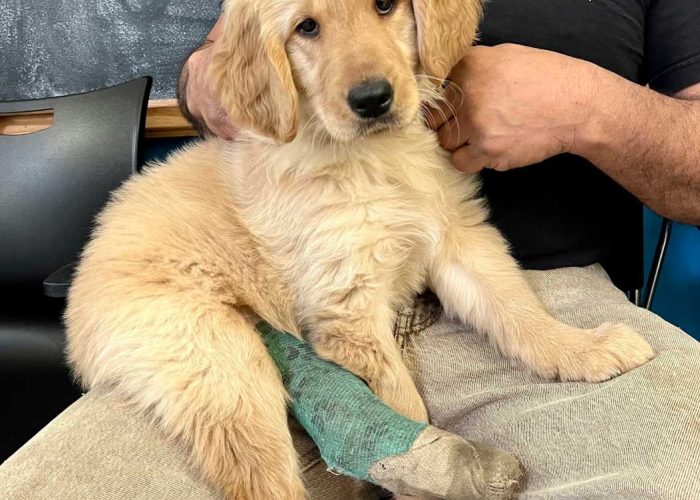Once upon a time we looked at surgery check-in and what that process looks like for us and our clients. Now let’s take a look at what happens on the other side of those mysterious surgery doors…
Check-in is in high gear by the time 8 o’clock rolls around. The surgery team spends much of that first half-hour finding their feet, literally in some cases, as they’re traipsing from the waiting area to the surgery area again and again each time they take a dog or cat back to be checked in.
We’ve got some good characters in, as always. Getting to see who’s with us today is always one of the best parts of the day. As I walk into the back, I already see my fave for the day: Fleur. She’s the sweetest and I love that fuzzy head!
Because check-in’s so hectic, each tech only sees part of the pets we have in for surgery. That means there’s lots of info getting passed around between them about who’s scared, who needs some extra love, and who’s just a big ol’ sweetheart. When I’m in there taking pictures, I’m directed toward Pig, who does, in fact, turn out to be a sweetie.
Part of the check-in process is us asking questions about the health and status of the pets in question. The owners have already answered a lot of these questions when they set their appointment, but double-checking eliminates the risk of an undisclosed issue that could cause problems with surgery. Safety first! One of the dogs in today has been eating a little bit less, but not by much. Blanca, our clinic operations supervisor, comes to the back into surgery to talk to one of the techs, Alyx, about whether this is something we need to be concerned with. Because the decrease in appetite is minimal, they decide to go ahead with the surgery.
Meanwhile, we’ve got some cute kittens back in the way back. We have a kitten play room where our other young ones are, but these babies all have slight health issues we’re clearing up before they’re introduced to the group. Ramona’s cleaning up the mess they’ve made overnight; kittens are messy, so it ends up being a bit of a chore. They’re looking really good, though; so much better than they were just a few days ago. Their eyes are almost clear and they’re energetic.
Lacey comes into the back with Kylo, a pretty cute little puggle wearing a Star Wars collar. The process of checking in involves getting an accurate weight so that we can determine the proper amount of anesthetic to administer before surgery. Some pups aren’t interested in the scale, or are scared of it, but Kylo wasn’t afraid of anything. We refer to him as “the puggle with the snuggles.”
Dr. Reinhardt gets started right away with brief exams of every pet in for surgery, listening to their hearts, making sure nothing seems abnormal. One of the front desk crew comes back and says that a lab mix named Pepper stole and ate his brother’s Prednisone. That’s not a very “good boy” thing to do, and Dr. Reinhardt asks that we reschedule his surgery for a couple of weeks to be on the safe side.
Another situation is the case of Mama Kitty. She was a found kitty, so the owners didn’t know her exact age. They listed her as being six years old.
“I dunno,” says Dr. Reinhardt, examining her in the carrier. “She seems like she’s seven at least.” She pets Mama Kitty on the head and tells Lacey that we need to contact the owner and let them know that there may be a higher risk of complications now that we’ve actually seen her and can make a better estimate as to how old she is. This is a big concern; this old lady needs to not ever deal with kittens again, but we’ve got to make sure she comes out the other side of the surgery okay, and that everybody knows the risks, especially her family.
Usually with pets older than six years old we want to do pre-surgical blood work. The reason for this is to check for abnormalities, to make sure that there isn’t anything going on that would cause complications during surgery, and because, honestly, it’s just good to run some blood work on older pets. Issues crop up sometimes that you won’t know about until you look at the blood work results.
(Mama Kitty did get surgery, by the way, and came through great!)
All told, there are 41 pets in for surgery today, plus 7 feral cats that were dropped off the day before. That’s a total of 48 pets getting surgery. Dr. Reinhardt is the only surgeon today, and even though she’s very quick and efficient, making sure everything’s in place and ready to go ensures that she’s got plenty of time to focus on what’s important. That means that once we have accurate weights, techs do the math and figure out how much anesthetic they need to be put under for surgery.
Prep also involves drawing up vaccines, since a lot of folks have added on vaccinations to their pet’s surgery. Alyx spends the better part of the early morning determinedly getting everything set up.
That means we’re pretty much ready to go. Once Dr. Reinhardt finishes her exams of everybody, things start really get moving. Rotation order has been determined, so now the techs start “bumping” the dogs. Then their bladders get expressed (so they don’t urinate while they’re unconscious on the table), the incision site gets shaved, and then a tech carries the pup in to the surgery suite. These are all things I promise never to show you pictures of.
The beginning of the day is crucial for the surgery team, but it’s also a very chaotic time. I’ve been here for almost three years now, and I never ceased to be amazed by not only their ability to do what is a very physically demanding job amazingly, but also by their ability to never, ever forget that the pets they’re dealing with are someone’s family.
